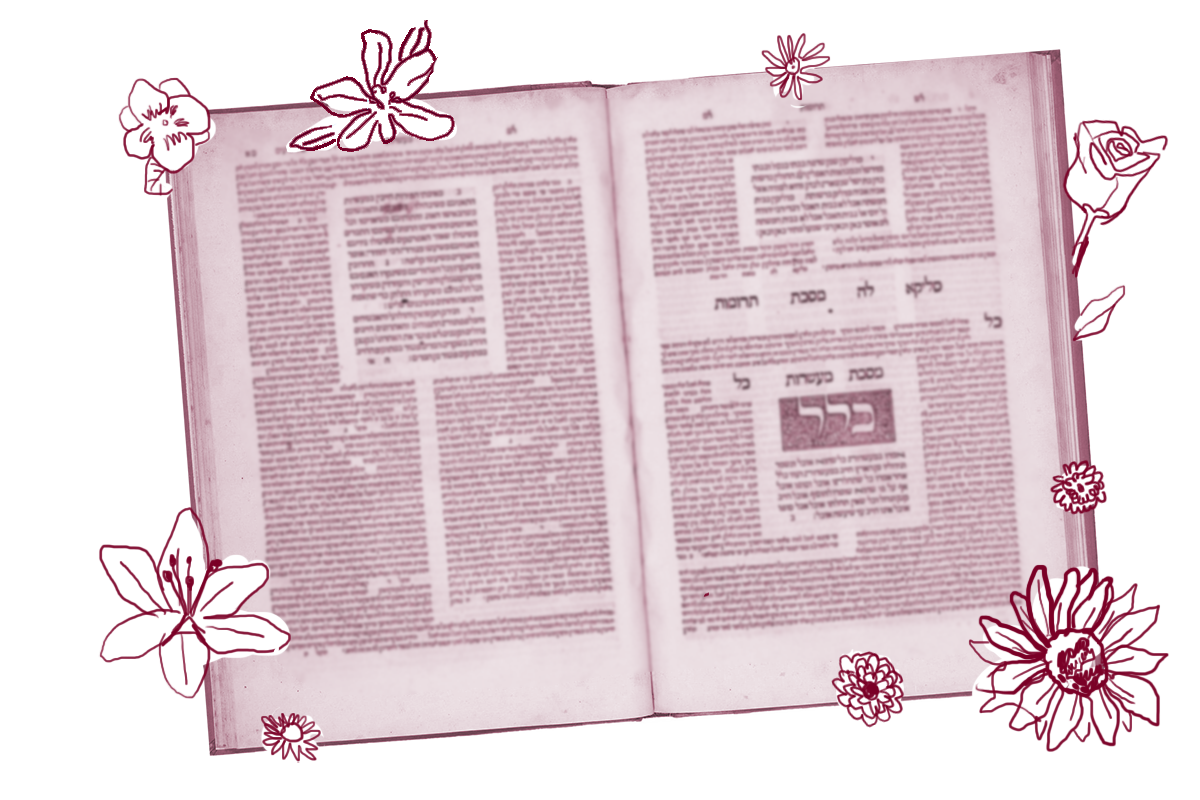Welcome to tractate Eruvin! If you’ve been on the Daf Yomi journey with us for a while, then you know we just finished Tractate Shabbat. But we are not really leaving that subject matter behind. Eruvin is in many ways a continuation of the previous tractate, for reasons that will become clear momentarily.
In tractate Shabbat, the rabbis of the Talmud were primarily concerned with defining and avoiding melachah, prohibited Sabbath labor. And while they explored many different kinds of labor, from writing to cooking to building, we also saw that from the very first page the most perplexing and preoccupying labor of the tractate was hotza’ah — carrying items from the private domain into the public domain (and vice versa).
The prohibition on carrying is complex to legislate, which is perhaps why the rabbis kept returning to it throughout the 157 pages of tractate Shabbat. We saw discussions about what exactly constitutes a public domain versus a private domain (and that odd intermediary, the karmelit), about the difference between carrying and wearing, about throwing objects that might accidentally land in one domain or the other, and more. It is also a particularly inconvenient prohibition. It means you can’t casually grab a loaf of bread from your kitchen table and bring it to your friend’s house across the street for a shared Shabbat meal. Or tote your house keys to synagogue. Or schlep a child through the streets in a stroller.
To ease the burden of this restriction, the rabbis devised the concept of an eruv, a way of combining various private and public domains together (eruv literally means “mixture”) to create a space that, for the purpose of carrying, is considered one private domain. For example, if a city is walled, that wall constitutes an eruv and observant Jews may carry items anywhere within it. But although a city wall serves as an eruv, a community without a pre-existing structure can construct an eruv to allow its residents to carry. These days, an eruv is often simply a wire strung on poles. (Learn more about the basics of eruv here.)

Help us keep Jewish knowledge accessible to millions of people around the world.
Your donation to My Jewish Learning fuels endless journeys of Jewish discovery. With your help, My Jewish Learning can continue to provide nonstop opportunities for learning, connection and growth.
This tractate legislates all the nitty-gritty details of eruv construction. We start right in at the beginning with a mishnah discussing a basic eruv that turns a three-sided public alley, with entrances to courtyards on all three sides, into a private domain for the purpose of carrying on Shabbat. This succeeds if the entrance to the alley is appropriately encased. But what exactly does that look like? The mishnah explains:
If the cross beam that spans the entrance to the alleyway is more than twenty cubits high, one must lower it to less than twenty cubits.
Rabbi Yehuda says: He need not.
If the entrance to the alleyway is wider than ten cubits, one must diminish its width. However, if the entrance to the alleyway has the form of a doorway (i.e., two vertical posts on the two sides, and a horizontal beam spanning the space between them) even if it is wider than ten cubits, he need not diminish it.
Here we see that the entrance to the alley must be framed appropriately, ideally with both side posts and a cross beam, and not be too large. These parameters, and the reasons for them, form the basis for the discussion in the Gemara.
Tractate Eruvin is delightfully and uniquely talmudic in many ways. For one, it unabashedly dives deep into detailed argumentation about a legal structure that is highly specialized and specific — and does so for over 100 pages (we’ll be here a while). For this reason, it’s not an easy tractate to study. In fact, it is widely recognized as one of the most difficult tractates of the Talmud to learn. Stick with us through this one, and you can put a major feather in your Talmud cap!
It is also something to revel in the way the rabbis have interpreted themselves into this legal discussion. After all, the Bible says simply that no work may be done on Shabbat, and gives relatively few examples (like lighting a fire). But it offers no specific restriction on carrying items into a public domain. That idea is purely rabbinic, and comes from the rabbis’ notion that the forbidden labors of Shabbat are derived from the construction of the Tabernacle. Having interpreted this difficult law into existence, the rabbis then proceed to invent the concept of an eruv — a way of attenuating the burdens. The whole structure, the prohibition on carrying and the eruv that makes carrying possible, is one of the most creative, towering and perplexing constructions of rabbinic law.
The eruv is sometimes called a “legal fiction,” but some find this term derogatory. They prefer instead to focus on the ways that this structure shows a seemingly infinite rabbinic patience with the complicated balancing act of making Shabbat a day apart and yet feasible for human beings who do not have infinite patience for inconvenience. The eruv heightens our awareness of sanctity, space and community. And if nothing else, the tractate about it is, undoubtedly, a stunning intellectual exercise. Here we go!
Read all of Eruvin 2 on Sefaria.
This piece originally appeared in a My Jewish Learning Daf Yomi email newsletter sent on August 11, 2020. If you are interested in receiving the newsletter, sign up here.



